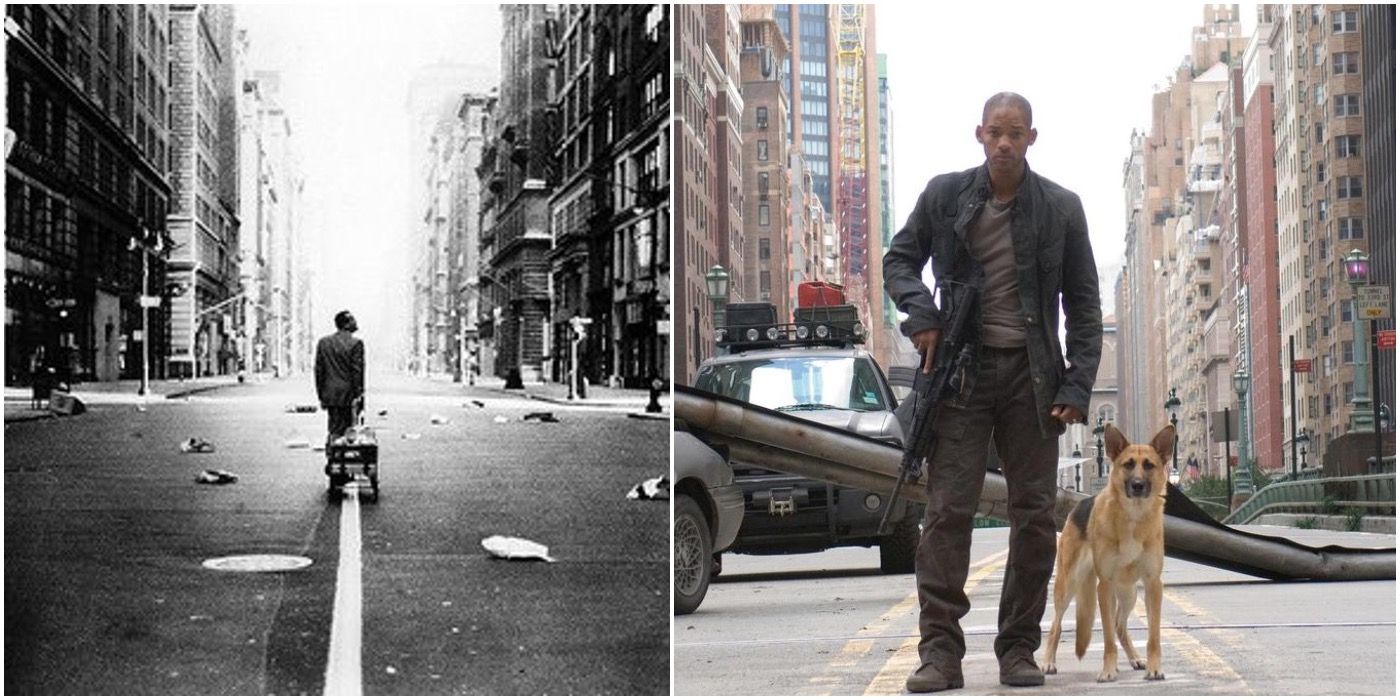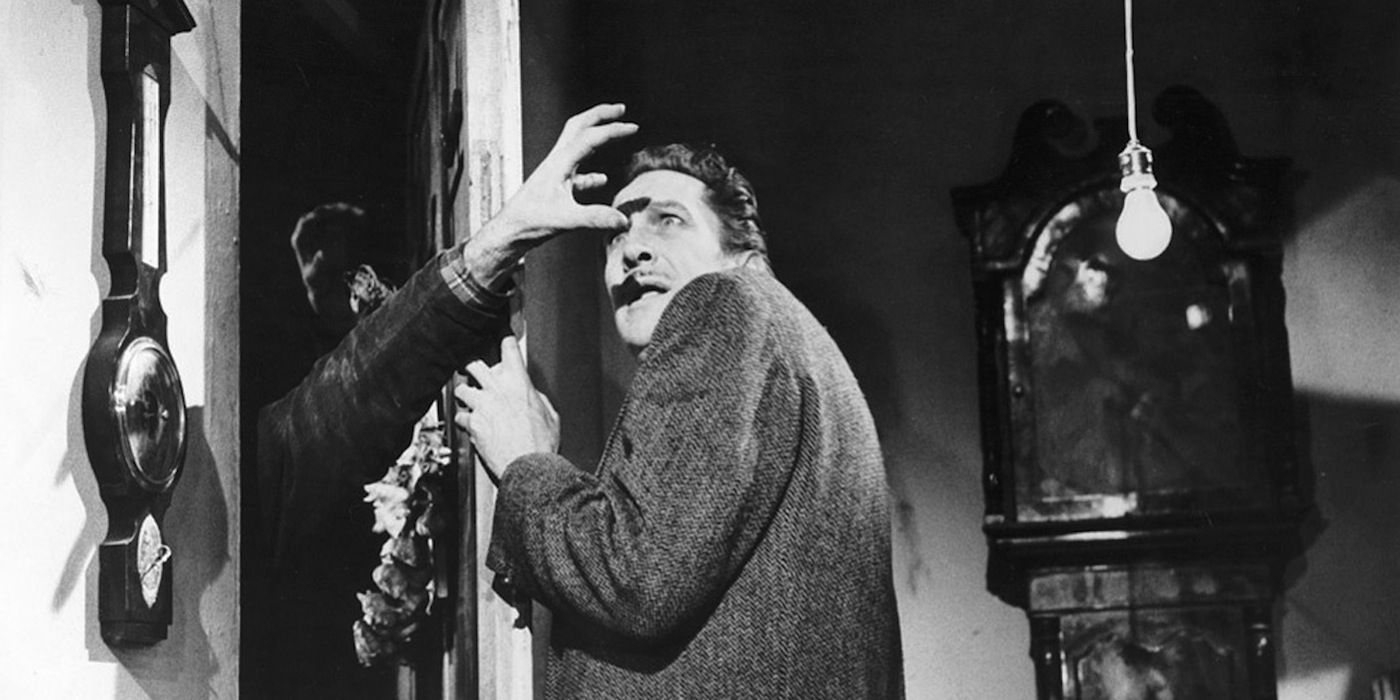The Last Man on Earth (1964) is a better version of Richard Matheson's novel than I Am Legend (2007). Neither adaptation matches the book completely, and each one reworks the story to create a much different subtext about the nature and fate of humanity. In the former, protagonist Robert Morgan (Vincent Price) can be seen as a symbol of the arrogance of humanity and its blindness to the affects it has on the world at large. In the latter, protagonist Robert Neville (Will Smith) can be seen as a symbol of humanity's resilience, and its capacity for self-sacrifice. The original story in the novel is more about humanity's inherent flaws than its virtues, which is what makes it so horrifying. This difference between the two films is the main reason The Last Man on Earth is the better version.
Despite their differences, both films share roughly the same plot—a solitary protagonist tries to survive in a post-apocalyptic world that is the result of a global pandemic that has turned humans into the undead. The protagonists of both films execute the living dead at will and assume that they are in the right to do so. However, Morgan is more preoccupied with eradicating the vampires than he is with finding a cure for their condition. Neville seems to be more concerned about a cure, and only begins to hunt the Darkseekers after they kill his beloved dog. He even seems to have sympathy for them and calls them human as he tests his cures on them. Morgan, on the other hand, has almost no sympathy for the vampires, and refers to the living infected as freaks by the film's end. Morgan's lack of sympathy highlights his very human flaws, which emphasizes the story's sense of doom.
Both protagonists do end up finding cures for certain types of infected people and ultimately lose their lives in the process. However, by the end of The Last Man on Earth, Morgan has become more of an antagonist in the story than his counterpart in I Am Legend, who sacrifices his life to save his newfound companions. This difference imbues the latter film with a sense of hope for humanity, resulting in a less horrific effect—another reason the former is the better adaptation.
What The Last Man On Earth Gets Right About The Legend
In The Last Man on Earth, Morgan seems at first to be the protagonist or hero of the story. When he meets Ruth, however, he is revealed to be its antagonist. Ruth belongs to a new society of the so-called living infected, who have discovered that the vampiric bacteria doesn't kill everyone it infects. She tells Morgan that many of those he has killed were actually living infected, who could have been cured using the medicine her society has developed. She tells him that his habit of moving around in the daylight instead of the night, leaving corpses strewn about the city, is a source of horror for her people. In this way, he becomes a legendary evil to them, a monster not fit for their new society, and pays for this error with his life.
This ending is more in line with the book, which ends explicitly with Neville becoming the legendary horror of the new vampire society instead of the other way around. In the book, Neville is just a simple man who uses his minimal resources to survive. He is not a scientist, though he does have some useful abilities and critical thinking skills that help him through his solitary days. However, because of the apparent joy he takes in killing vampires, he never really was the hero of the story and ends up becoming its antagonist, which he is too blind to see until it's too late, implying that humanity's downfall is inevitable and a direct result of human nature.
The Last Man on Earth fails to hit this nail exactly on its head because Morgan does in fact find a cure for the disease, making him a hero in some way. However, it does a better job than I Am Legend the film, which ends with Neville becoming a heroic legend rather than a villainous one. Humanity's flawed nature is almost completely eliminated. He never fails to be the hero of the story, even in an alternate ending that was somewhat closer to the book. The film fails to incorporate the novel's ultimate horror, which is that the nature of the human race is to destroy itself. In its place, the film inserts a subtext about humanity's resilience and ability to persevere.
In The Last Man on Earth and the book, the infected appear to come straight out of humanity's nightmares (i.e., vampires), but they are actually the product of human evolution or human activity in some way. In essence, humanity is either the cause or the ancestor of this new species. As the protagonists try to understand their newfound place in the world, they inadvertently condemn themselves to become legendary horrors in their own right. They accomplish this self-destruction via the common human traits of violence and arrogance. In other words, the new society rightly sees the protagonists—and by extension, humanity—as horrific creatures, because that's what they are. As a result, humanity is replaced by a new society that views it in the same way that it views its own legendary bogeymen—as unnatural creatures to be destroyed at all costs.
Both The Last Man on Earth and I Am Legend feature valid subtexts about humanity's grim future. The former implies that human arrogance will be the downfall of humanity, while the latter implies that human resilience will be its salvation. Despite the fact that the effectiveness of both films pales in comparison with the novel, the more frightening version by far is The Last Man on Earth because in the end, the human race becomes extinct.


